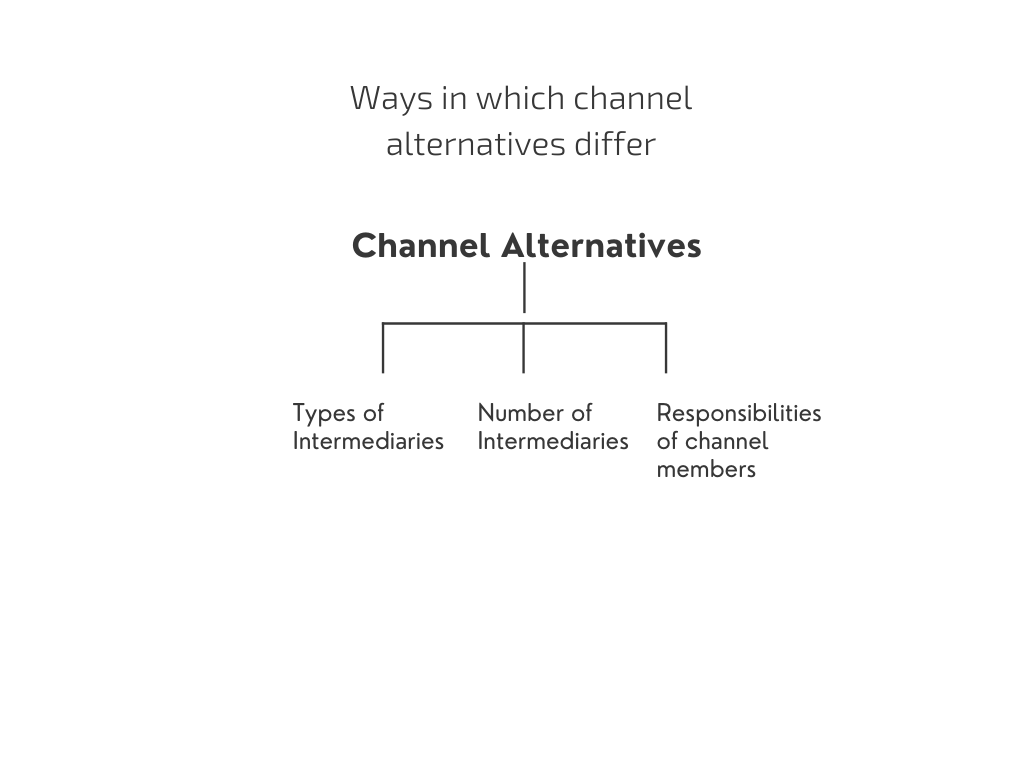Introduction
The what and why of channel design have been addressed in Chapters 1 and 2. In this section, I will take you all through the how of channel design. Marketing executives are faced with many decisions about how various channels can be used.
Should a new channel be designed? If so, what is the channel design process? Should the existing channel be modified? If so, how can the channel design and management be modified?
These are a few questions whose answers will be found in this chapter.
While designing the channel, marketing executives keep a few key ingredients in mind to make up a robust and dynamic mechanism through which the producers can meet the consumers. The foremost of it is to analyse what the customer wants.
Channel Decision 1: What does the customer want?
Marketers need to thoroughly analyse what the customer needs and what the customer wants. Simply put, a need is the deprivation of something, and a want
is something the customer has identified to satisfy their need. More about needs and wants can be found in chapter 2 of the basics of marketing on our website1.
Here the direction of analysis would be how the customer views the product from the point of view of the channel. Customers might choose one particular product on price differentiation and another product on the ease of access to the product.
It becomes imperative to analyse the customer's needs and how the channel can be used appropriately. Having multiple channels might seem attractive to lure customers from all sides, but there are significant costs associated with managing the channel.
Hence channel segmentation becomes crucial, and marketing executives must be aware of the fact that consumers display varying needs during the purchase process and primarily look to get the best deal possible.
Customers' Expectations from Marketing Channels
As mentioned above, the customers' primary expectation in the purchase process would be to explore the best financial deal. However, there are a few other features that make channels more attractive; they are
The number of products accessible in the channel. This desired lot size becomes essential based on who is accessing the channel. A wholesaler might need a channel catering to multiple products, but an individual buyer will be looking at the channel delivering one product.
- Speed of delivery: Customers want the fastest delivery possible, and channels that deliver the product the quickest are usually preferred.
- Ease of delivery: Channels that make it easier for customers to access the product are usually preferred. Amazon and Flipkart are prime examples of this.
- Variety in products: Channels that offer the most diverse products will create an impression of the ability to meet all needs, and that will be another prospect the customer will look towards
Ease of Service: Channels that ensure that ease of repair and service or return will also be on the back of the customer's mind while buying the product.
All these aspects should be kept in mind during the channel design process before moving on to the next step of the design process, which is to establish the objectives of the channel.
Channel Design Decision 2: Establish Objectives & Constraints in Channel design
As mentioned earlier, while it might seem that it is better to design multiple channels, it might not always be feasible. There are substantial costs associated with maintaining a channel. Hence, the primary objective would be that channel should be delivering maximum service output at a minimal price.
The Channel Design objective also will depend on product characteristics. A few examples are as below:
- Perishable goods cannot be sold on channels that take time to reach the customer. This is why we see the sugarcane industry close to plantations so that the sucrose level is not lost in transition.
- Heavy products delivery should be transported on channels with minor handling.
- Delicate products should be ideally sold on channels like factory outlets or franchises. For example, Swarowski jewels are sold by their stores or Titan watches are sold in stores either directly or stores operated by franchisees.
- Customized products are usually done via direct sales. The rise of mobile and internet channels has brought this to the forefront in recent times. For example, Air pods have an option of getting the name engraved on the outer case; in such a case, the sale is directly made via the website.
- Products requiring installation and regular maintenance are usually done directly by the company.
Certain external factors also need to be considered while establishing channel objectives, and they account for the secondary considerations of channel design decisions. They are:
- Macroeconomic conditions: prevailing macroeconomic conditions will play a massive part in the consumer's psyche, influencing the urgency of access to the product. When the economic conditions aren't good, the consumer will be looking to pay less and might not worry much when riding the wave.
- Legal restrictions are also sometimes in play. For example, when US regulations banned the import of Mangoes from India, the farmers had to immediately establish a robust internal channel so that the fruit didn't go waste.
Channel Design Decision 3: Identifying Channel Alternatives
Through the earlier chapters, we have seen that while it feels good to have a maximum number of channels to reach diverse customers, the feasibility of maintaining all these channels is often seen to be doing more harm than good.
Companies usually choose from the diverse channels and narrow down a particular combination of a few of them so that their product or service reaches a varied segment of buyers. In this section, I will take you through how Channel alternatives differ.
Each channel has a few unique strengths and a few weaknesses as well. However, in essence, the channel alternatives differ in three ways

Type of Intermediaries: Should the company sell directly to the customer? Should it sell via a dealer? Or perhaps door-to-door sales? Can the product be sold to another manufacturer to become part of a different new whole product? These are questions that would provide a choice of alternatives to the producer.
Number of Intermediaries: Once the manufacturer decides to sell his via intermediaries, the next question would be how many intermediaries will be in the chain between him and the end customer.
The strategies for deciding upon the number of intermediaries would be determined by the distribution methods which the manufacturer might choose
If the manufacturer wants the supply chain to consist of knowledgeable resellers, there would be very few intermediaries. If the manufacturer wants an aggressive mode of sales, then the number of intermediaries would be more.
Responsibilities of channel members: The number of intermediaries and type of intermediaries is not enough to identify channel design alternatives. The members need to be evaluated by the responsibility endowed upon them and the financial implications it results in.
Say endowing with ten differing responsibilities to five-channel members is resulting in X financial implication to the firm
If X is profitable, then it would mean that the responsibilities given are getting the monetary fruit. If X is not making money, the manufacturer needs to alter either responsibilities or the number of channel members.
Channel responsibilities are arrived at usually by the elements such as price policy, conditions of sale and territorial extent of rights of purchase given to the member being taken into consideration.
After the channel alternatives are identified, the final stage would be to evaluate these alternatives.
Channel Design Decision 4: Evaluate the Channel Alternatives
There are three parameters on which channel alternatives are evaluated:
Economic Criteria: the primary consideration is that manufacturers are always looking to maximize profit. In evaluating channel alternatives also, this underlying principle remains the same. Here the manufacturer will use the channel that generates maximum demand but at a minimal cost.
Sellers will always try to replace high-cost channels with low-cost channels. How this can be done is to estimate the monetary value of the volume of sales each alternative will likely generate, the cost of selling different volumes through each channel and finally compare costs and sales.
Control Criteria: the channel which ensures that the firms have maximum control over is the one that is usually preferred.
Adaptive Criteria: the world is fast evolving, and the pandemic made it more evident that organizations that aren't adaptive will perish. The same holds for channel design decisions as well.
In the VUCA world, producers prefer the channel structures and policies that provide for a higher degree of adaptability.
Conclusion
That's the end of channel design decisions. In this chapter, we have seen the various decisions the organizations and producers have to take when designing a channel, especially from a marketing channel design perspective. In the next chapter, we will see the decisions that will have to be taken to manage the selected channel design.
Additional reading of the customers influencing the channel can be read here.


It was really helpful kindly looking up for more information